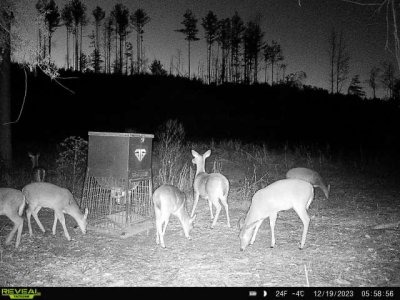That article is heavily based upon the premise for the doe harvest that you NEED to remove does - not that you want to kill a doe for food. Yes, if you are killing them to reduce deer density - then anytime is good. That is not my case. We very selectively harvest a doe or two, based upon our fawn recruitment of that year or previous year. We are not killing does to reduce density - we are killing them for some fine eating and only when we feel fawn recruitment that year or previous year justifies the removal of a doe or two.Kind of interesting. It seems that all the answers to not culling a genetically weaker young buck applies in the positive to harvesting does late in the season. All the answers that “make sense” make no impact due to the scientists.

Ask Wired To Hunt: Should You Shoot Does After the Rut?
Should you shoot does after the rut? It’s a question I see debated on social media regularly this time of year and it’s something I’ve pondered myself. Having thoroughly examined the pros and cons, as well as my own specific circumstances, I’ve always answered with a definitive yes. If the doe...www.themeateater.com
We like to take a 1.5 yr old doe - with no fawn. If you wait until the end of december, it is impossible to determine if that doe had a fawn earlier in the fall and it can be difficult at that point to determine age based upon body size and shape. That is why we do camera surveys in Sept.
I think in the article, they are speaking in generalities. As far as not being able to influence genetics of the herd - I will buy that - for the most part. I will not buy that you cannot influence genetics of a next spring’s individual fawn. The number of does thought to be breed by a mature buck in a wild herd varies greatly by the articles I have read - but IN GENERAL seems to fall between two and four. I have high buck numbers on my place - so probably toward the lower side.
Whether true or not, we hunters generally think that the biggest buck on our place is carrying some good genetics. I know on deer farms - typically the biggest buck is considered the most valuable breeder. I consider the same on my farm. If my biggest buck (or one of top 25% bucks) breeds a doe - and this is theory on my part - that doe’s offspring will carry genetic material of my best buck. Again, in theory - the fawn produced from that breeding stands to have a better chance of being a better genetic specimen. No, the overall genetics of the herd may not be genetically altered - but that single fawn is. I believe that is how the biggest bucks of the place are made. Purely Chance meetings of genetically Superior parents - that produce a true a anomaly for the area. Since a mature buck may only breed three does in a year, it would be a shame if one or two of his breedings came to naught because someone killed a doe in January to make hamburger out of. Early to mid Oct doe harvest will curtail that.
Now, to the 6-8 lbs food per deer per day. Our state’s private land doe hunt was mid Oct and now it is around first of Jan - 75 days later - the two does we might normally take would eat approximately a half ton of food combined in that period of time. In the big picture, my remaining deer are not going to die of starvation, but grazing my wheat/clover food plots provides a very high protein source at a time of the year when other high quality forages are scarce. I want my deer to be in as good health as possible coming out of winter to benefit fawn production and antler growth. A half ton of food lost is a half ton of food lost.
While I am a trained wildlife biologist - I dang sure am not a specialized deer bio. A lot of theory here.
L
Last edited:

